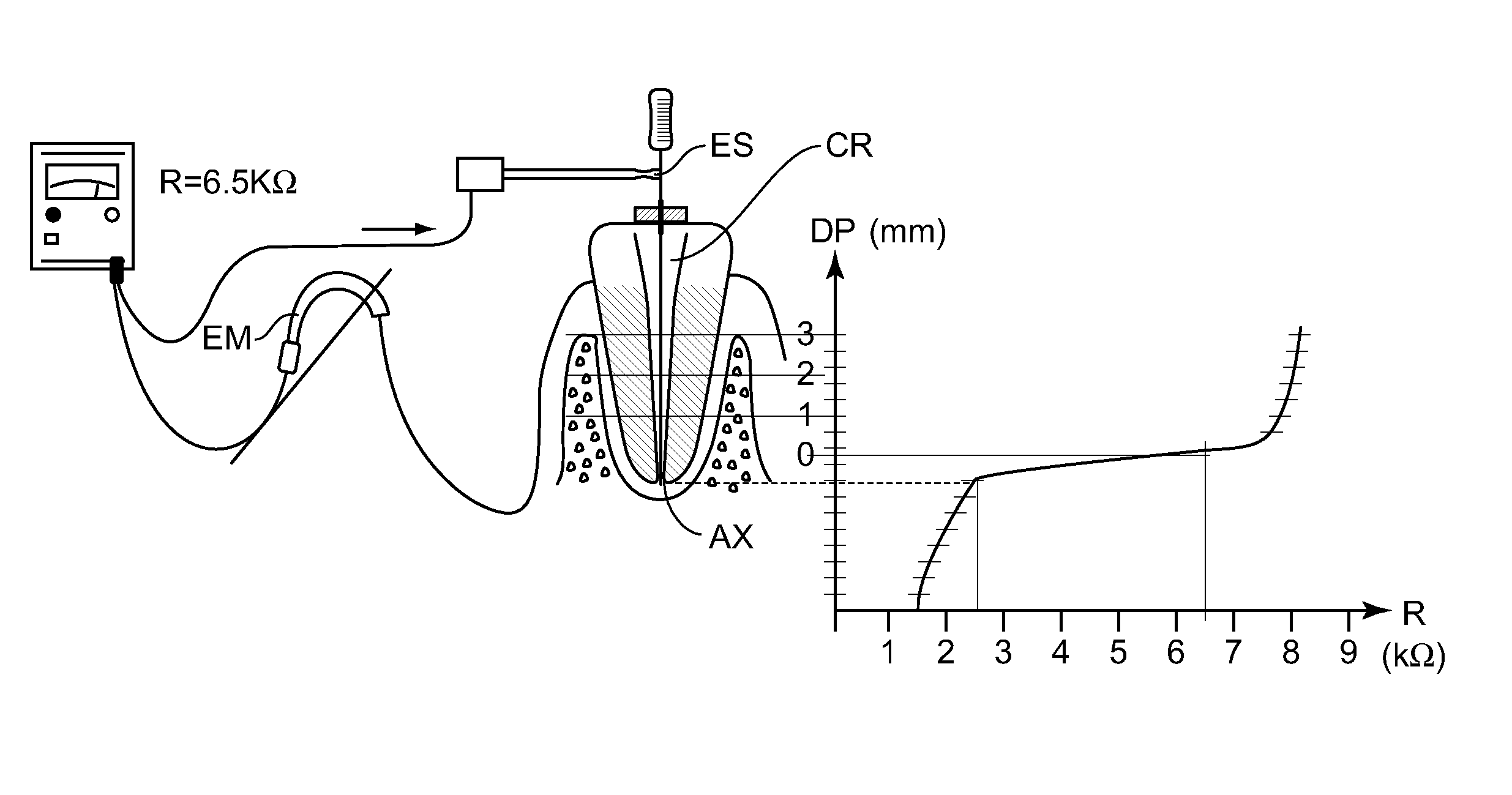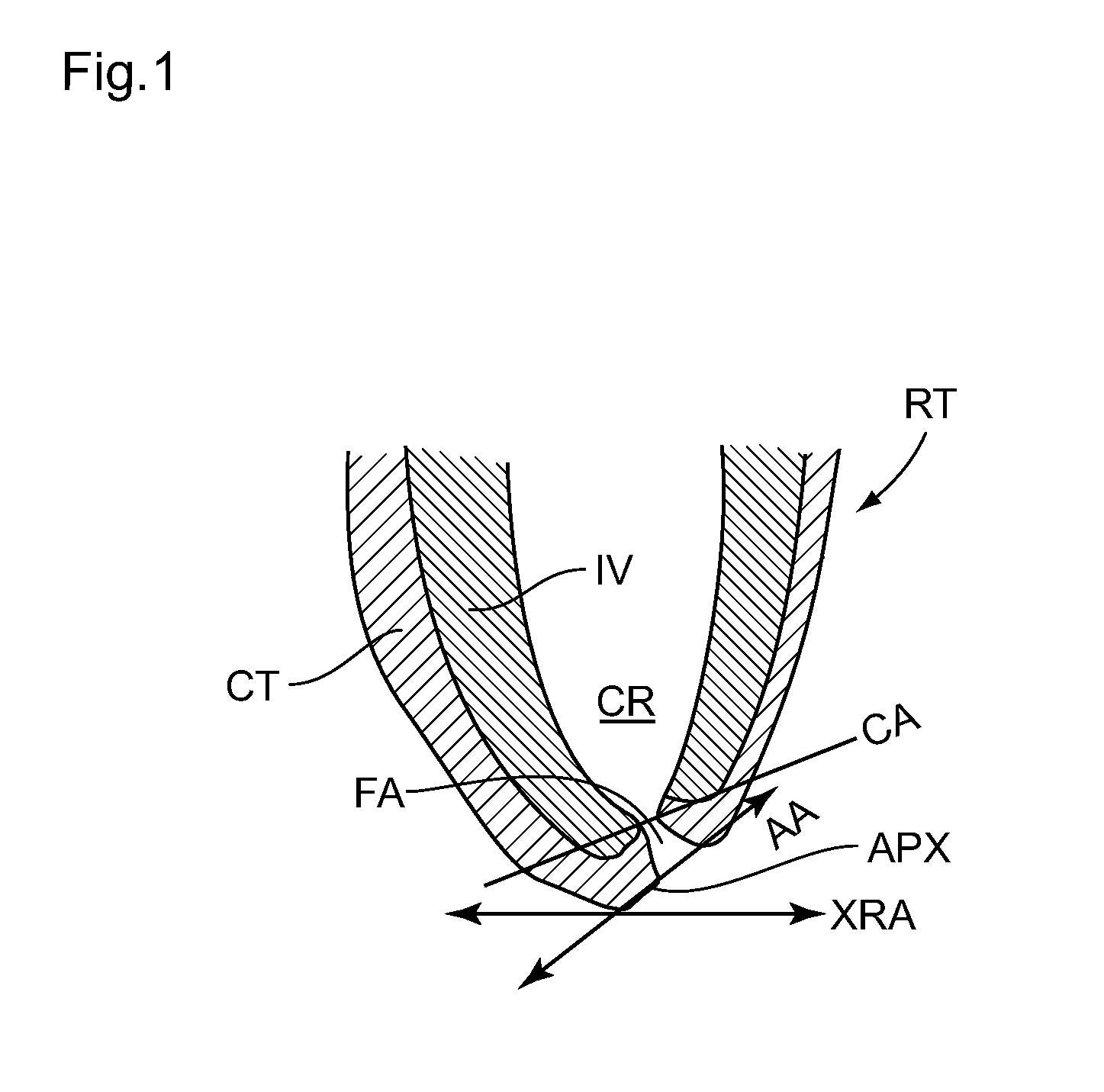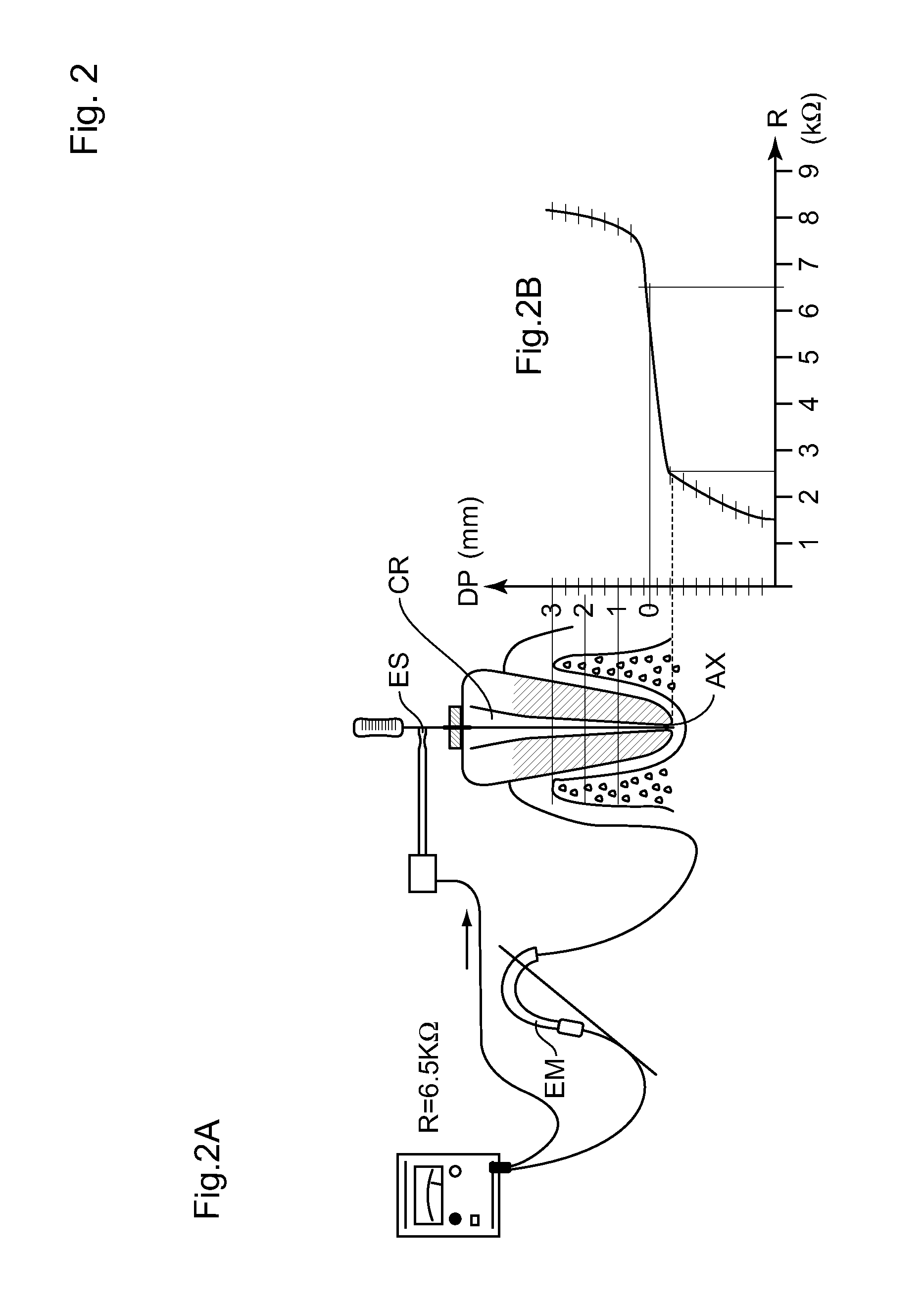Method and device for determining the apical position in a dental root canal
a technology of apical position and root canal, applied in the field of apexlocating methods and devices, can solve the problems of not meeting the objective of dentists, based on second measuring principle, and not working on children
- Summary
- Abstract
- Description
- Claims
- Application Information
AI Technical Summary
Benefits of technology
Problems solved by technology
Method used
Image
Examples
Embodiment Construction
[0100]In the present invention a conductive endodontic probe is used which may have various forms and in particular be formed by a metal rod, point or file which acts as an electrode. The probe electrode is preferably in the form of a narrow, elongate, flexible metal rod, of centimetric length (of the order of one centimeter or a fraction of a centimeter to several centimeters, not more than a decimeter, typically 2-3 cm). This rod or file with a round or other cross-sectional shape has a diameter (transverse dimension) clearly less than its length. The metal rod which acts as a terminal electrode (in electrical contact with an intermediate connection electrode and / or connected to an output terminal of the generator GF) can be covered over all or part of its length by an insulating covering as in the plots of experimental curves as reported hereinafter in relation to FIGS. 11A and 11B. It is possible, in particular, to use endodontic probes which are available through commercial net...
PUM
 Login to View More
Login to View More Abstract
Description
Claims
Application Information
 Login to View More
Login to View More - R&D
- Intellectual Property
- Life Sciences
- Materials
- Tech Scout
- Unparalleled Data Quality
- Higher Quality Content
- 60% Fewer Hallucinations
Browse by: Latest US Patents, China's latest patents, Technical Efficacy Thesaurus, Application Domain, Technology Topic, Popular Technical Reports.
© 2025 PatSnap. All rights reserved.Legal|Privacy policy|Modern Slavery Act Transparency Statement|Sitemap|About US| Contact US: help@patsnap.com



